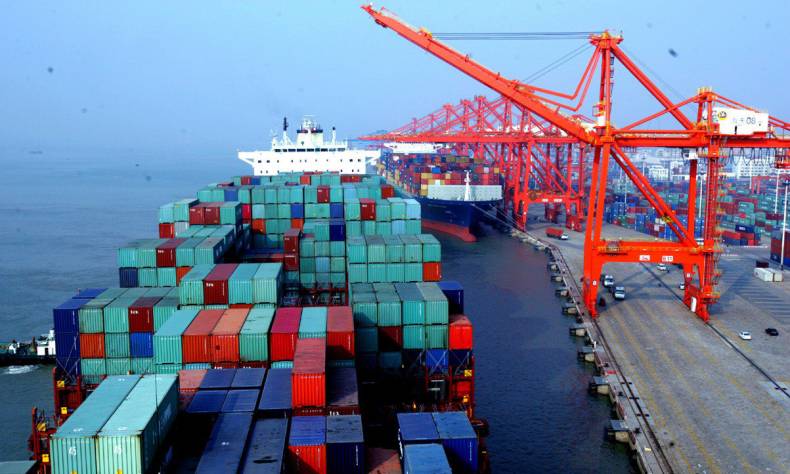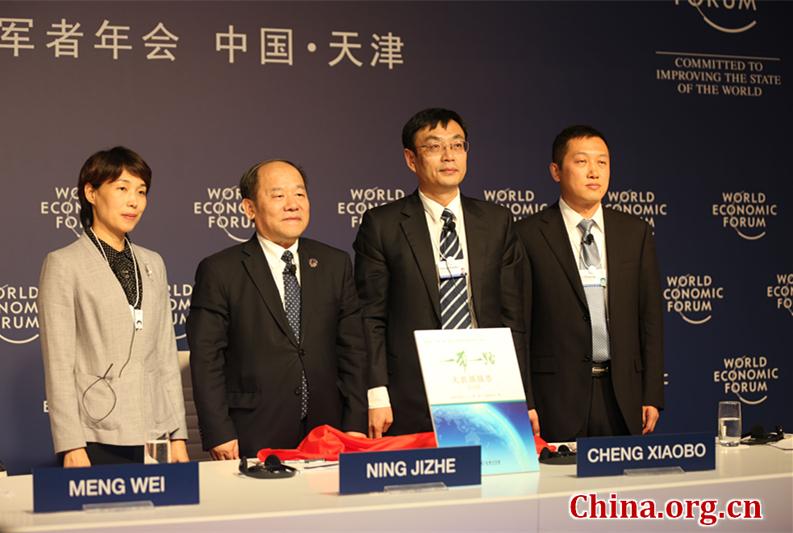
Report at Summer Davos Forum Tells the Latest BRI Development
National Information Center releases the Belt and Road Big Data Report 2018 on Sept. 19 during the 2018 Summer Davos Forum.
The Belt and Road Big Data Report (2018) is a comprehensive annual report fully reflecting the progress and achievements of the Belt and Road Initiative (BRI) by means of Big Data for the third consecutive year since the first report was released in 2016.
Δ National Information Center releases the Belt and Road Big Data Report 2018 on Sept. 19 during the 2018 Summer Davos Forum. [Photo by Gao Zhan/China.org.cn]
These are the report’s three major traits:
First, it is data-based. It thoroughly analyzed over 50 billion pieces of data from dozens of data sources including online public opinion, trade, investment, tourism and cross-border e-commerce through text clustering, emotion analysis and social network analysis.
Second, it is comprehensive. This report covers 71 countries, 31 domestic provinces/autonomous regions and municipalities, more than 1,000 think tanks, and over 2,400 media organizations involved in the BRI.
Third, it applies indexed assessment. This report focuses on BRI a country cooperation index, provincial and municipal participation index, investment environment index, digital Silk Road smoothness index, and media attention and think tank influence index. Among these indexes, the investment environment index and digital Silk Road smoothness index are the first to be released domestically.
We can draw the conclusion from this report that China’s cooperation with countries involved in the BRI is increasing year by year.
In terms of policy communication, China communicates most frequently with its neighboring countries including Russia, the Philippines and Cambodia. In connection facilities, China added the most direct flights to ASEAN countries, while Eastern Europe and Central Asia became the main destinations for Chinese railways. In trade smoothness, China’s trade volume with countries involved in the BRI increased by 13.4 percent in 2017 compared to 2016, exceeding by 6 percent China’s overall foreign trade growth rate. Furthermore, China’s trade growth rate with Central Asia grew the fastest. In terms of financial communication, China has a sound cooperation with Russia, Malaysia, the United Arab Emirates, Pakistan and Kazakhstan. Regarding human exchanges, Belt and Road countries have become new growth points for Chinese outbound tourism as well as new destinations for Chinese students to study abroad.
In terms of digital Silk Road construction between China and countries involved in the BRI, some countries and regions have shown great potential. For example, countries with high-level information technology such as Israel, Lithuania and Latvia have a low digital Silk Road smoothness index with China, which means they have great potential for China’s future digital economy cooperation.
China Focus lists the key parts of the report for you.
 Facebook
Facebook
 Twitter
Twitter
 Linkedin
Linkedin
 Google +
Google +












